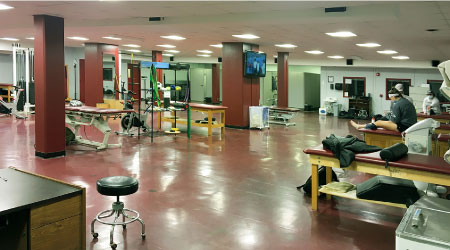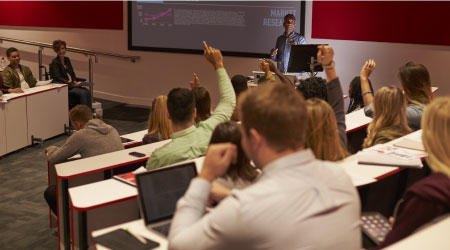
UMass Upgrades Student Gym, Improves Student Wellness
April 8, 2022
Cultivating a healthy relationship with fitness for personal wellbeing is vital for every individual and even more so for college students. According to research published by Harvard Medical School:
- Approximately 67,000 college students from 100 colleges and universities showed high rates of stress
- One out of four students were either diagnosed with, or treated for, mental health issues
- One-fifth of students have considered suicide and 20 percent reported self-injury.
Additionally, research from Michigan State University found a link between exercise and higher GPAs in college students and students with gym memberships were less likely to drop out of school.
Never has the need to reduce students’ anxiety been more important than during the pandemic. Covid amplified and contributed to the mental health impact for many students. Unfortunately, campuses – including fitness centers and gyms – shut down. However, once gyms reopened and offered students a space for much-needed physical activity, it was imperative that the facilities team implement upgraded cleaning protocols, including new technology, to provide students with a sense of comfort and protection.
The University of Massachusetts Amherst (UMass) takes students’ mental and physical health seriously. Campus Recreation is an integral part of the educational mission, and the university actively promotes and encourages a lifelong commitment to health and wellbeing. To that end, UMass is regularly upgrading campus facilities.
When UMass physical plant engineers updated the lighting at Boyden Gymnasium, their two main goals were to replace the dated fluorescent lighting - which was uneven and did not provide enough illumination for the athletic trainers who normally use these rooms - with LED luminaires to help reduce energy consumption and improve the lighting quality throughout the facility. But the Athletic Department had one additional request: that the new LED fixtures for a couple of specific areas utilize visible light disinfection technology that, in addition to illuminating the space, could be used to kill harmful germs, such as Staph, including MRSA, as well as SARS-CoV-2 and Influenza-A.
Exercise facilities have been considered “high-risk” for transmission because of their enclosed environment, shared equipment and close contact between users and staff. After the pandemic hit, UMass discovered the added benefit of the disinfecting luminaires: students feel more protected at the gym knowing the lights kill SARS-CoV-2.
“The students and staff are very happy with the new lighting. It provides increased illumination levels and a greater level of comfort and security that comes with the fixtures’ abilities to not only fight Covid-19, but also to reduce harmful germs and bacteria that can be found and spread in athletic-type facilities,” says Peter Volpe, UMass electrical engineer.
While the lights were installed prior to the pandemic, since they have been scientifically proven to kill the virus associated with COVID-19, UMass has investigated using these not only in locker rooms and training facilities to disinfect, but also in public spaces, such as lobbies and waiting areas, where they would also be helpful in preventing the spread of COVID-19.
Additionally, the university receives all the traditional benefits of transitioning away from fluorescent, including tool-less access for ease of re-lamping and maintenance.
“These fixtures use LED technology, so they have a longer lifetime then the fluorescent lighting they replaced, which will reduce maintenance costs. The new fixtures do a great job of lighting the room and provide higher illumination levels than the fluorescent light fixtures they replaced-- while using less energy,” Volpe concludes.
Next
Read next on FacilitiesNet











.jpg)
